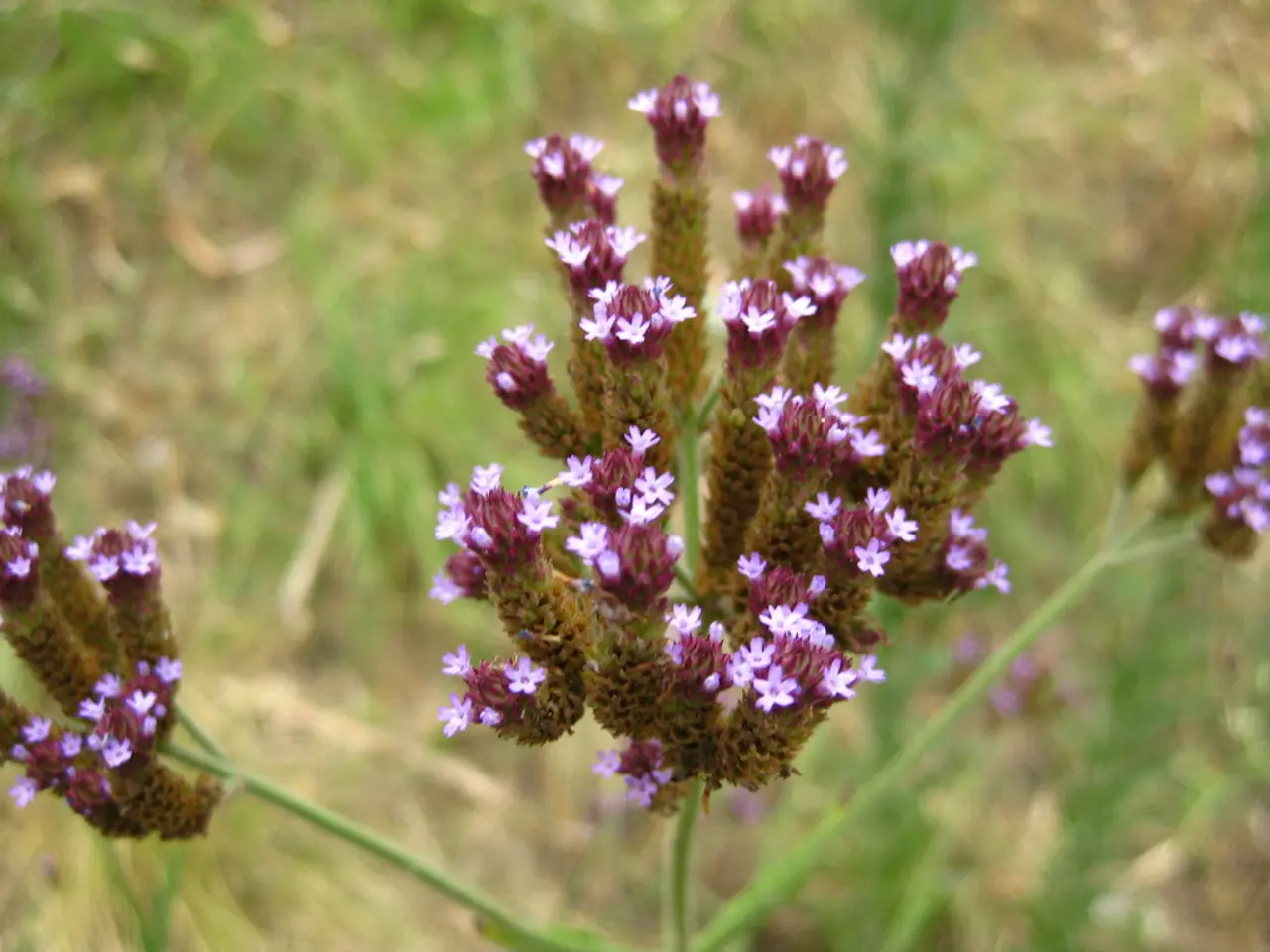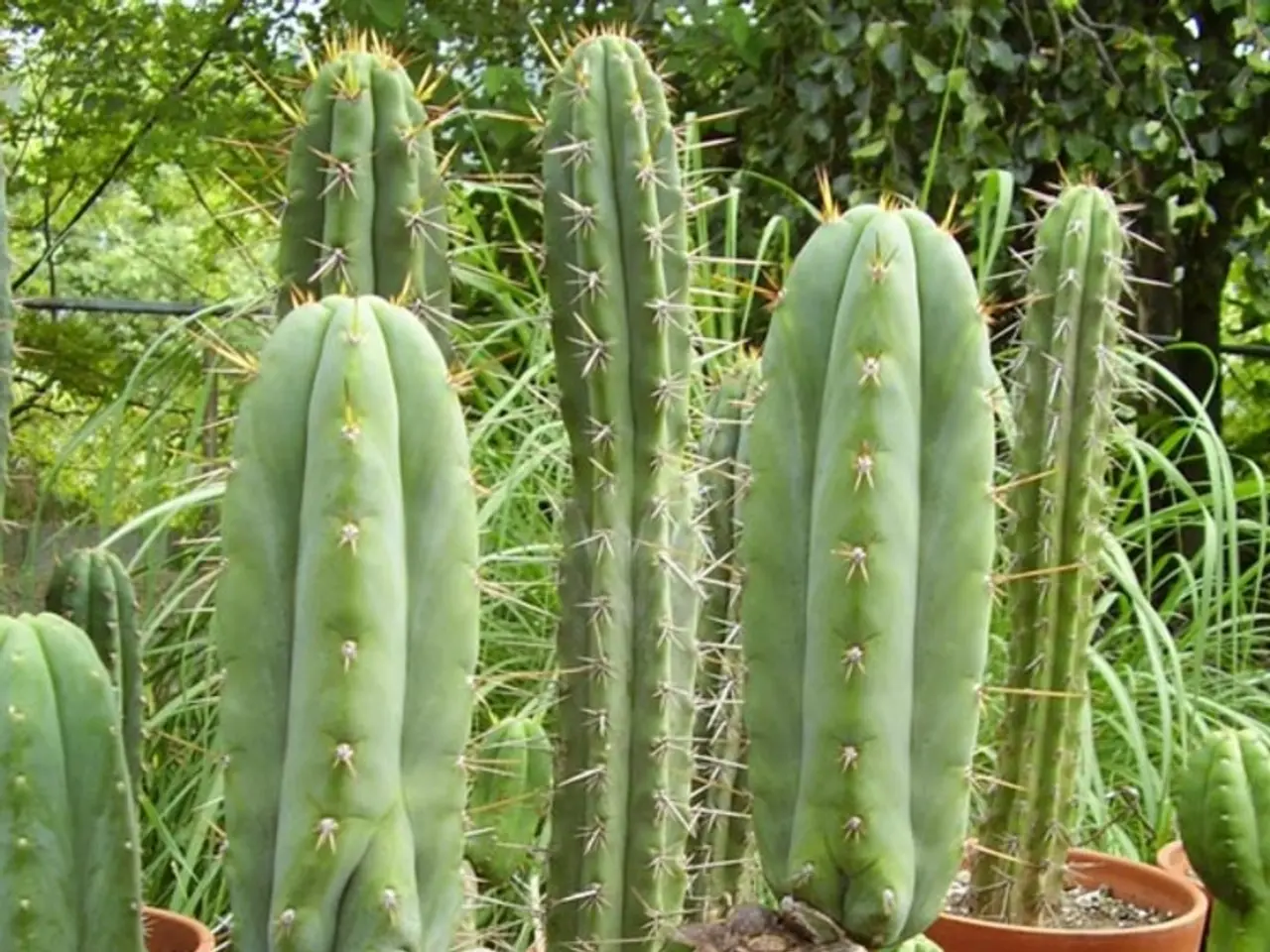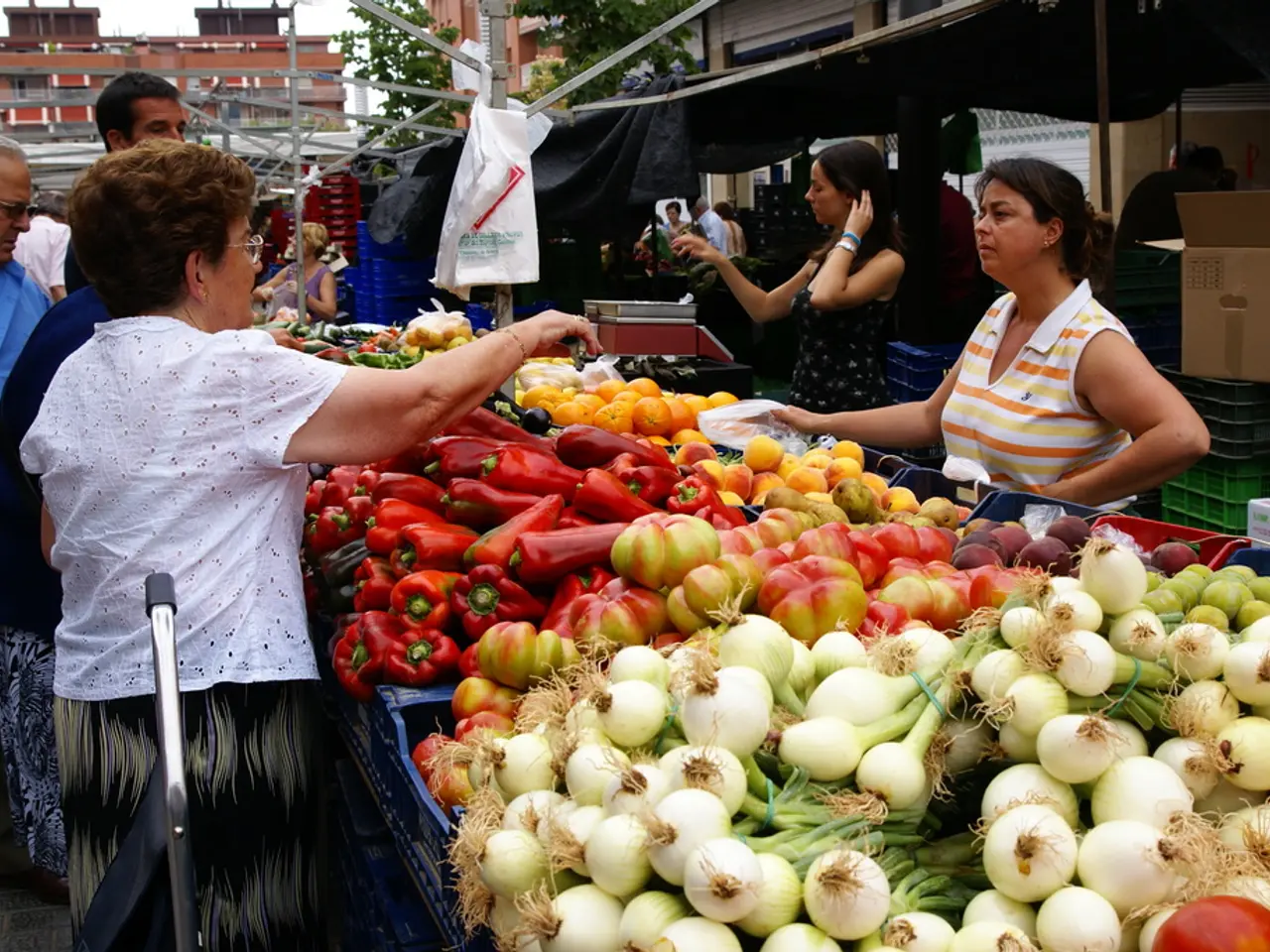Twelve Engaging Gardening Projects for Beginners that Cultivate Awe for Nature's Cycles
Transforming Your Outdoor Space: A guide to seasonal gardening projects
Embrace the joy of gardening by partaking in seasonally appropriate projects that foster the growth of a prosperous ecosystem while helping you hone essential growing skills. Whether you're a novice gardener or have some experience with plants, each season offers unique opportunities for learning and creation in your garden.
From spring seed starting to winter planning, your gardening journey never has to halt – read on to discover how to make the most of every season with beginner-friendly projects designed to boost your gardening confidence while nurturing your garden.
Understanding the Basics of Seasonal Gardening
Creating a successful seasonal garden involves aligning your planting activities with nature's calendar for optimal growth and harvest success. To get started, arm yourself with essential tools and materials, including:
- Hand trowel and pruners for planting seedlings and maintaining plants
- Garden fork and spade for preparing soil beds and harvesting root crops
- Watering can or hose with adjustable nozzle settings
- Garden gloves to protect hands during soil work and pruning
- Plant markers and garden journal to track plantings and progress
- Quality potting soil enriched with organic matter
- Basic fertilizers suited for different plant needs
Learning Garden Planning Fundamentals
A strong foundation is vital for successful seasonal gardening. Begin by:
- Identifying your USDA hardiness zone to select suitable plants
- Mapping sunlight patterns across your garden space
- Creating a simple planting calendar for each season
- Dividing garden beds into sections for crop rotation
- Tracking frost dates for spring and fall planning
- Measuring garden space to determine plant quantities
- Listing companion plants that grow well together
With each planning element, you build the foundation for a thriving seasonal garden while preventing common beginner mistakes.
Spring Gardening Projects for Beginners
Take part in these spring gardening projects to develop essential growing skills and breathe life into your garden during the season of renewal:
Starting Seeds Indoors
Launch your gardening journey by growing seeds indoors 6-8 weeks before the last frost date. You'll need:
- Seed trays or waterproof containers
- Potting soil
- Grow lights or a sunny windowsill
Fill trays with pre-moistened soil, place 2-3 seeds per cell at the recommended depth, and mist gently. Monitor temperature (65-75°F) and moisture, keeping soil damp but not waterlogged. Once seedlings emerge, remove all but the strongest plant per cell and provide 14-16 hours of light daily.
Consider the Burpee SuperSeed 36-Cell Seed Starter Tray for effortless seed starting with its smart watering system, flexible cells, and compact design.
Creating a Simple Herb Garden
Transform a sunny spot into a fragrant herb garden using containers or a small ground plot. Opt for beginner-friendly herbs like basil, oregano, mint, chives, and parsley. Plant in well-draining soil enriched with compost, spacing herbs 6-12 inches apart based on mature size. Place taller herbs like sage toward the back, shorter ones in front. Water deeply once weekly and harvest outer leaves regularly to encourage bushy growth.
Consider Meberam 6x3x1FT Galvanized Raised Garden Bed for easy vegetable, herb, or flower gardening in your yard.
Building Raised Garden Beds
Create basic raised beds using untreated cedar or pine boards measuring 4×8 feet and 12 inches deep. Select a level sunny location and remove grass before assembly. Line bottom with hardware cloth to prevent pests, fill with quality garden soil mixed with compost at a 70:30 ratio, space beds 2-3 feet apart for easy access, and create paths between beds using mulch or gravel for maintenance accessibility.
Summer Garden Activities and Maintenance
Optimize your garden care during the warmest months of the year while learning essential cultivation skills:
Companion Planting Projects
Boost your garden's productivity by pairing compatible plants together. Plant basil near tomatoes to enhance flavor and repel pests. Grow marigolds alongside vegetables to deter harmful insects while attracting pollinators. Try the "Three Sisters" method by planting corn, beans, and squash together – the corn provides support, beans add nitrogen, and squash blocks weeds. These combinations create natural pest barriers, improve soil health, and maximize growing space.
Natural Pest Control Methods
Create organic pest solutions using common household items. Mix 1 tablespoon of neem oil with 2 cups of water to spray on affected plants. Plant aromatic herbs like lavender, mint, and rosemary throughout your garden to naturally repel unwanted insects. Encourage beneficial insects by installing bug hotels or leaving shallow water dishers nearby. Hand-pick larger pests like tomato hornworms during morning garden walks when they're most visible.
Consider reading the "Clover Robin: Bug Hotel Book" to delve deeper into the fascinating world of insects.
Water Conservation Techniques
Master efficient watering practices to maintain your garden during hot months:
- Install drip irrigation systems or soaker hoses to deliver water directly to plant roots.
- Add 2-3 inches of organic mulch around plants to retain moisture and reduce evaporation.
- Water deeply but less frequently, encouraging roots to grow deeper.
- Collect rainwater in barrels to use during dry spells and water early morning or evening to minimize waste through evaporation.
Consider the CARPATHEN Drip Irrigation Kit, Adjustable Emitters for an efficient watering system that minimizes waste.
Fall Garden Learning Opportunities
Take advantage of fall to learn and grow:
Harvesting and Seed Saving
Master seed saving from your summer crops to create next year's garden. Select fully ripened vegetables like tomatoes, peppers, and pumpkins to harvest seeds. Dry your seeds on paper towels for 5-7 days away from direct sunlight. Store dried seeds in labeled paper envelopes or glass jars in a cool dark place. Learn to identify viable seeds by conducting simple float tests where healthy seeds sink in water while hollow ones float.
Consider Scott Paper Towels, Choose-A-Sheet, 6 Double Rolls for an eco-friendly brand that's ideal for seed drying.
Building a Compost System
Trans Anna yard waste and kitchen scraps into rich garden soil through composting. Layer green materials like vegetable scraps, grass clippings, and coffee grounds with brown materials like dry leaves, twigs, and shredded paper. Maintain a 3:1 ratio of browns to greens for optimal decomposition. Keep your pile as moist as a wrung-out sponge and turn it every 2-3 weeks. Your finished compost should be dark, crumbly, and smell earthy.
Learn more about composting with "Saving Seeds: 322 Vegetables, Herbs, Fruits."
Planting Bulbs for Spring
Plan your spring garden by planting flowering bulbs in fall when soil temperatures drop below 60°F. Choose hardy varieties like daffodils, tulips, and crocuses based on your growing zone. Plant bulbs at a depth of 2-3 times their height with pointed ends facing up. Space bulbs 4-6 inches apart in well-draining soil. Add bone meal to the planting hole for better root development and spring blooms.
Winter Indoor Gardening Projects
Keep your green thumb active during the cold months with these engaging indoor projects:
Growing Microgreens
Transform your kitchen into a mini farm by growing nutrient-rich microgreens in shallow trays. Start with easy varieties like radish, pea, or sunflower microgreens using a growing medium 1-2 inches deep. Place your trays in a sunny spot or under grow lights and maintain consistent moisture with a spray bottle. Harvest fresh nutritious greens in 7-14 days by cutting just above soil level. These quick-growing crops provide immediate gratification while teaching basic seed starting skills.
Starting a Windowsill Garden
Create a productive indoor garden using your sunniest south-facing windows. Choose compact varieties of herbs like basil, chives, and parsley or leafy greens such as lettuce and spinach. Plant them in 6-inch containers with drainage holes using quality potting mix. Water when the top inch feels dry and rotate containers weekly for even growth. Your windowsill garden will provide fresh ingredients while helping you master container growing techniques.
Building a Mini Greenhouse
Construct an indoor greenhouse using a clear plastic storage bin or repurposed CD cases. Drill drainage holes in the bottom layer, add 2 inches of seed starting mix, and plant winter-friendly crops like lettuce or microgreens. Cover with the clear lid to create humidity and place near a bright window. Monitor moisture levels daily and ventilate by propping the lid open when condensation forms. This project teaches greenhouse management basics while providing fresh greens throughout winter.
Year-Round Garden Planning Tips
Successful gardening requires thoughtful organization and consistent tracking throughout the seasons:
Keeping a Garden Journal
Document your growing journey by keeping a dedicated garden journal. Record daily observations, including weather patterns, plant health, germination rates, and harvest yields. Use a weatherproof notebook to sketch garden layouts, photograph plant progress, and note successful combinations. Include, failures too, as these provide valuable learning opportunities for future growing seasons. Add plant tags, seed packets, and maintenance schedules to create a comprehensive reference guide.
Creating a Seasonal Calendar
Map out your gardening year with a detailed seasonal calendar. Mark important dates like the last frost, first frost, and optimal planting times for different crops. Note succession planting schedules, dividing larger crops into smaller plantings every 2-3 weeks. Include maintenance tasks such as fertilizing, pruning, and mulching. Color-code activities by season and crop type to create an easy-to-follow visual guide that aligns with your local growing conditions.
Tracking Plant Progress
Document your plants' development using systematic observation methods. Measure growth rates, photograph changes, and record flowering, fruiting dates. Note pest issues, disease symptoms, and successful treatment strategies. Track harvest quantities, quality, and timing to optimize future planning. Create simple spreadsheets or use garden planning apps to maintain organized records of plant performance throughout each growing season. Include weather impacts and soil condition changes to build a complete growth timeline.
Advanced Projects for Growing Skills
Take your gardening expertise to the next level with these challenging yet rewarding projects:
Garden Design and Layout
Master the art of garden design by creating themed garden spaces such as butterfly gardens, moon gardens, or edible landscapes. Map microclimates in your yard to optimize plant placement based on sunlight, wind patterns, drainage patterns. Install vertical growing systems like espalier fruit trees, or living walls, to maximize space while adding visual interest. Consider implementing permaculture principles such as herb spirals, food forests, or keyhole gardens to create sustainable ecosystems.
Soil Amendment Techniques
Develop custom soil blends tailored to specific plant needs using precise ratios of organic materials, minerals, and beneficial microorganisms. Create biochar to improve soil structure, water retention, and microbial activity. Practice sheet mulching techniques to build rich soil layers naturally while suppressing weeds. Implement crop rotation systems that balance soil nutrients through strategic plant succession planning.
Plant Propagation Methods
Learn advanced propagation techniques like air layering, grafting, and division of perennials to expand your garden sustainably. Create a dedicated propagation station with humidity controls, grow lights, and heating mats for year-round plant multiplication. Master the art of taking softwood, hardwood, and root cuttings from various plant species. Build a mist propagation system to increase success rates with difficult-to-root plants.
Common Mistakes and Solutions
Common gardening mistakes can become valuable learning opportunities when you know how to address them effectively.
Troubleshooting Plant Problems
Start by identifying yellowing leaves, yellow which often signal overwatering or nutrient deficiencies. Fix overwatering by reducing water frequency and ensuring proper drainage in containers or beds. Address nutrient issues by testing soil pH and adding appropriate organic fertilizers. Watch for early signs of pest damage like holes in leaves or wilting and treat problems with neem oil or insecticidal soap. Always check plant placement to ensure proper sunlight exposure matches each plant's needs.
Learning from Failed Projects
Document unsuccessful gardening attempts in your garden journal to avoid repeating mistakes. Track which plants didn't thrive and note potential causes like improper spacing, poor soil conditions, or incorrect timing. Transform disappointments into opportunities by researching alternative varieties that better suit your climate. Start small with new projects to test methods before scaling up. Keep photos of plant problems to help identify similar issues in future seasons.
Adapting to Weather Changes
Monitor local weather forecasts and protect plants from unexpected temperature swings. Use row covers, frost blankets, or cold frames to shield tender plants from late frosts. Create wind barriers with temporary fencing or strategically placed containers during storms. Install shade cloth to protect sensitive plants from intense summer heat. Keep extra mulch handy to regulate soil temperature and moisture during extreme weather conditions.
Building a Sustainable Garden Practice
Embrace eco-friendly methods to turn your garden into an environmental sanctuary. Adopt natural pest management techniques like planting marigolds to deter harmful insects. Create biodiversity by mixing flowers with vegetables, attracting beneficial insects such as ladybugs, bees, and butterflies. Use organic mulch, including straw, leaves, or grass clippings, to suppress weeds naturally while enriching soil health. Switch to natural fertilizers like compost tea, worm castings, or aged manure to build soil fertility without synthetic chemicals.
Resource Conservation Tips
Minimize water consumption and waste while maintaining a thriving garden:
- Install a rain barrel system to collect roof runoff for garden irrigation, saving up to 1500 gallons of water during the growing season.
- Group plants with similar water needs together, implementing drip irrigation or soaker hoses, to reduce water waste by 30-50%.
- Plant self-sustaining garden beds using permaculture techniques like vertical growing spaces and companion planting.
- Repurpose household items like egg cartons for seed starting and plastic containers for mini greenhouses, reducing waste and saving money.
Long-Term Garden Planning
Design your garden with permanent features like perennial food forests, fruit trees, and berry bushes that provide years of harvests. Map out rotating annual beds following a 3-4 year cycle to maintain soil health and prevent pest problems. Establish dedicated areas for composting, seed saving, and tool storage to streamline garden maintenance. Create a succession planting schedule ensuring continuous harvests throughout growing seasons while maximizing space efficiency.
Conclusion: Growing Your Gardening Journey
Beginning your seasonal gardening journey opens up endless possibilities for growth and learning. Remember that every gardener started as a beginner, and learning from both successes and setbacks is part of the process.
Take it one project at a time and you'll be amazed at how quickly your garden transforms into a thriving space that reflects your dedication and growing expertise. Happy gardening!
Embrace your gardening endeavors by discovering how to turn your home-and-garden into a bustling hub of multisensory delights through the lifestyle of seasonal gardening projects. Explore diverse stories on gardening within our 'home-and-garden' segment, where you'll find practical tips and starter projects for gardening beginners or veterans, aimed at helping cultivatethe essential growing skills needed to experience the joy of nurturing plants season after season.
In this article, we demonstrate the value of gardening through actionable lifestyle advice, offering beginner-friendly projects tailored to each season, such as starting seeds indoors for spring, creating a simple herb garden, building raised garden beds, and more. As you embark on a rewarding journey of growth and education, rely on our guidance to master the basics of seasonal gardening, empower you with gardening planning fundamentals, and equip you with essential tips for success throughout your garden's transformation. Consider articles like 'Understanding the Basics of Seasonal Gardening' and 'Learning Garden Planning Fundamentals' to amp up your gardening knowledge and design a flourishing home-and-garden that resonates with your unique lifestyle.








